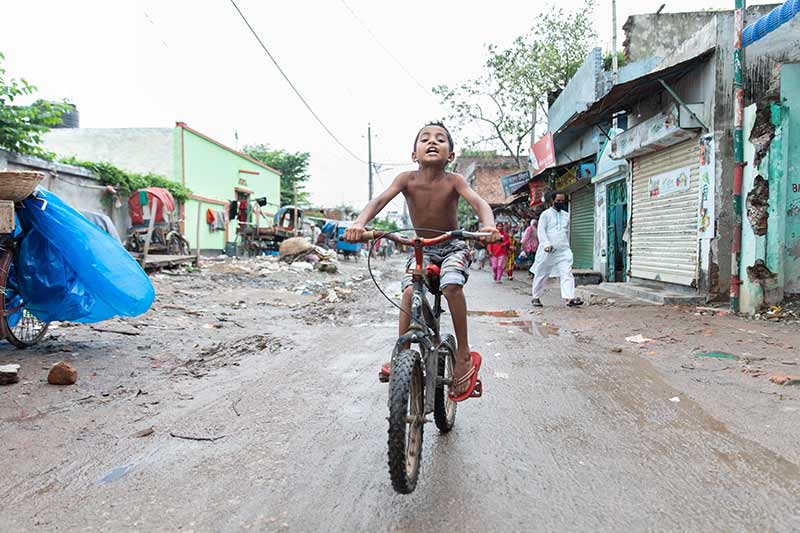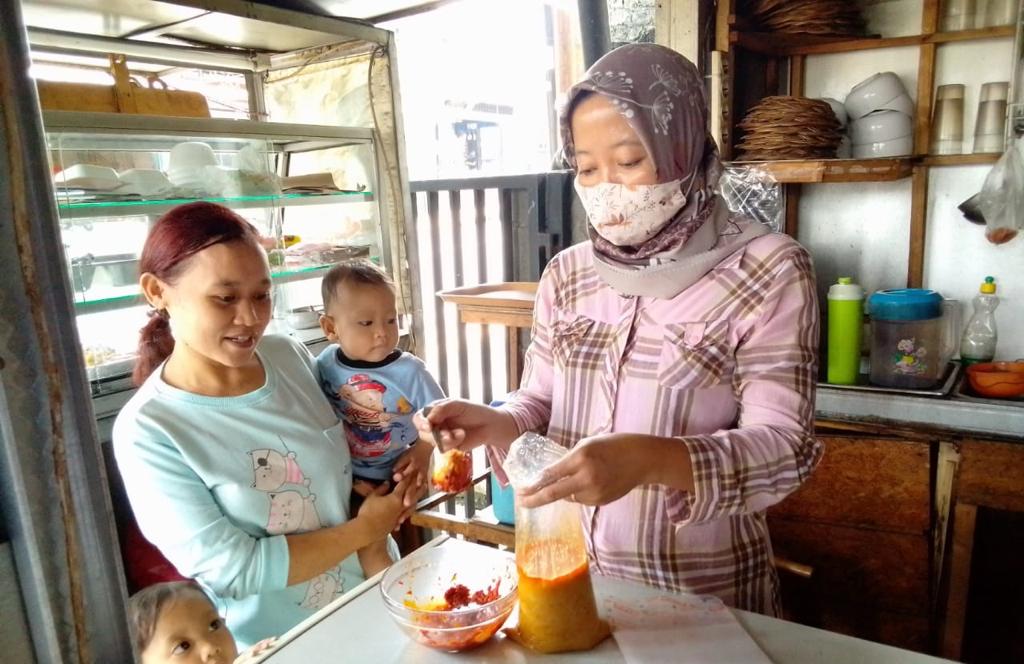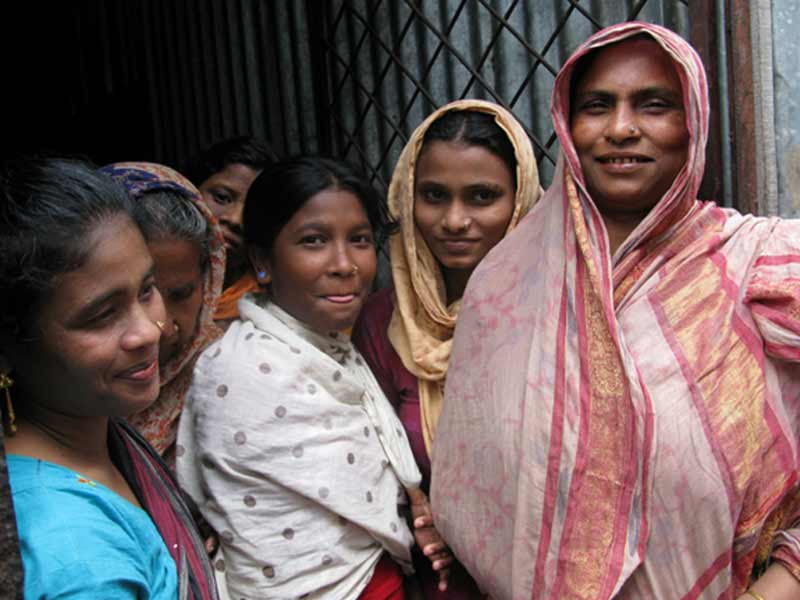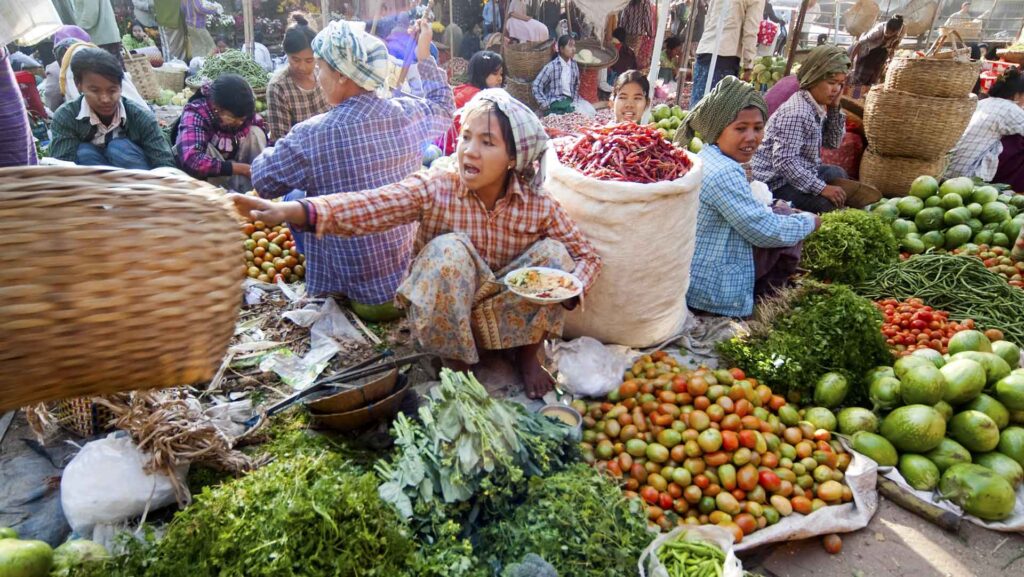
Food security and diets in urban Asia: how resilient are food systems in times of COVID-19?
Overview of the 4 deep dive case studies
Individual factors and
consumer behaviour Dhaka, Bangladesh: Cash aid scheme improves food accessibility in urban slums.
Food supply chains –
Dhaka, Bangladesh:
Strengthening food
supply chains and food
access in cities by
minimizing post-harvest losses
Food supply chains,
Food environments – Jakarta, Indonesia:
Government led farmers’ markets and e-commerce
Food supply chains –
Quezon City, Metro
Manila, The Philippines: Urban
agriculture programme
Cash transfer in urban slums, Dhaka city

Objective: Improve access to nutritious foods for urban poor populations

Target population: 7,607 households from low-income in urban slums
Expected impact pathway
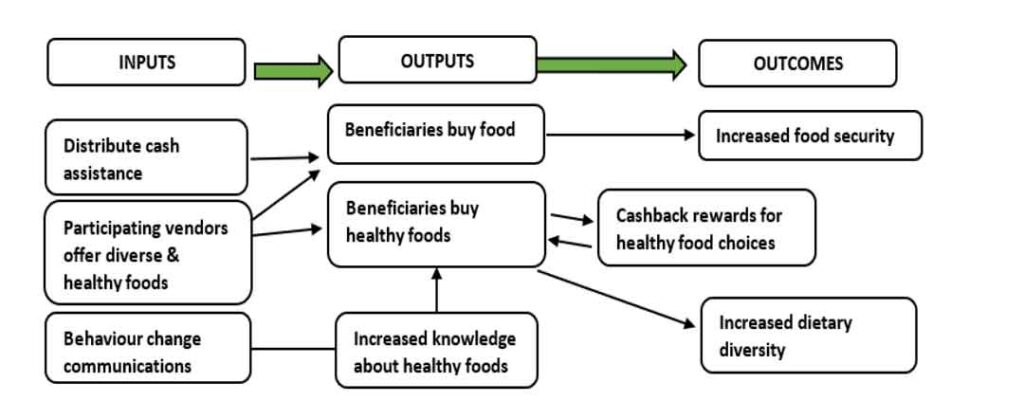
Achievement and potential impact
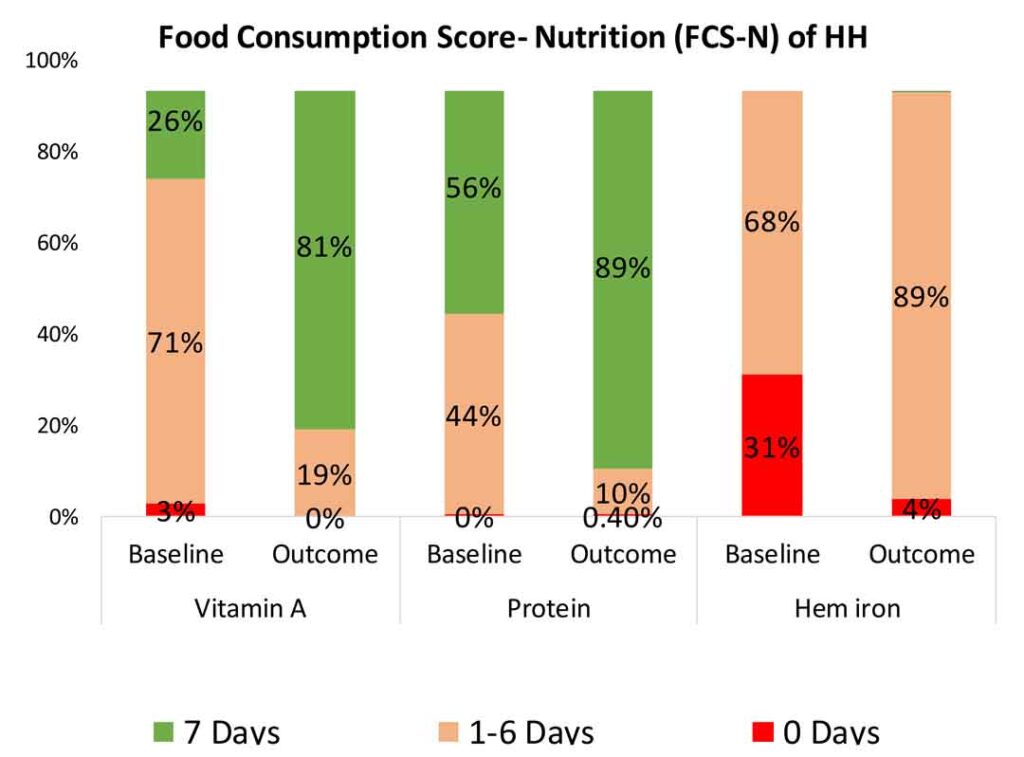


Lesson learnt, Scalability and sustainability
Scalability and sustainability
- WFP discussions with Ministry of Women and Child Affairs to take up programme participants as part of social welfare programme
- WFP and BRAC to work with FAO to include farmers and van sellers to work more holistically.
Scalability and sustainability
- Need to consider the mobile nature of urban populations.-> Digital registration system
- Need for alert for possible fraudsters
- Beneficiaries understand the given list of food items more than details of how the system works.
Recommendations
- Promote the potential of cash incentives for Government and agencies to implement nutrition-sensitive social safety net programmes
- Increase the sustainability of the cash programme by leveraging the potential of the programme to influence other components of the food system
- A combination of a cash incentive and behaviour change communications could have the potential to achieve behaviour change beyond food, but ethical considerations regarding directing the choices of vulnerable programme participants need to be carefully evaluated
Government led supply chainmanagement strategy

Objective: Strengthen food supply chains and food access in cities by minimizing post-harvest losses

Target population: : Farmers, Traders in Dhaka city, Poor urban dwellers supported through government food baskets, Urban dwellers in general
Key strategy - Impact pathway
Scalability and sustainability
- Strong collaboration and cooperation among sectors
- Market linkages, system level supply chain efficiency
- Nutrition sensitive elements, livelihood of farmers and traders, use of online market information
Long term outcomes
- Good governance
- Enabling environment created for further public private partnership
Challenges
- Intercity transportation logistics
- Human resources constraints
- COVID-19 fears
Scalability and sustainability
- Further develop the cold chain element of the supply chain (fruits and vegetables).
- Proposal underway

Recommendations
- Increase the nutrition-sensitivity of the initiative
- Undertake systematic monitoring and evaluation of the initiative
- Consider how product quality could be better assured when orders are placed by phone instead of the trader selecting products in person.
Common success factors – 4 case studies
- Partnerships: Effective collaboration between government departments and private sector actors.
- Political commitment: All case studies were characterised by government involvement and commitment, and most of them were government-led
- Holistic approach: Intervene on multiple components of the food system and a combination of actors, including consumers, suppliers and producers
A Government Led Farmers' Market and E-commerce in Jakarta
Pasar Mitra Tani/Toko Tani Indonesia Center (Farmers
Partner Market)

Objective:Improve food access and affordability by shortening supply chains stabilizing the supply and price of essential food commodities and by offering online purchasing commodities

Target population: General public but especially lower-and-middle-class citizen, farmers and union farmer groups, first-hand supplier, online taxi motorcycles, direct importers of frozen meat and small-medium enterprises
Food Distribution Process within Pasar Mitra Tani's farmers' market system.
1: National level hub in South Jakarta. It can distribute food to district and subdistrict level hubs and outlets.
2: Hub centre at the national or
district/subdistrict level, e.g. one in East Jakarta.
3. Hub centres across
province/district/subdistrict
4. Outlets located in each sub district
5. The Union of Farmers Group, Farmers; breeders, distributors, suppliers
6. Low-cost Food Bazar /Consumers

Government led farmers’ markets and e-commerce

Low-cost food bazars
- Selling hub items in targeted residential areas
- Target areas densely populated by low-middle income families or areas of subsidised apartments
Achievements and potential impact

Success factors & good practices
- Government commitment and ownership The MoA lay out a costed nationwide strategy to support food supply chains and implemented it with a monitoring mechanism
- Using innovative online delivery approaches such as new digital platforms to reach out to a larger audience, and specific actions to try to make the Pasar Mitra Tani more accessible
- Targeting low-income families and residential areas through Low-cost Food Bazars to ensure the Pasar Mitra Tani food items can be accessed by those who would most benefit and who may not be digitally literate
- A monitoring system that tracks sales, including leftover stock, visitor numbers and customer satisfaction is a good basic step in conducting monitoring and evaluation activities.
Challenges
- Low digital literacy among poorer urban communities – e-commerce not as accessible to them
- Not a business entity: farmers are paid after the goods are sold which is inconvenient for the farmers who prefer a direct payment.
- E-commerce: quality of farmers’ produce varies and customers are unable to choose a vendor
- Closure of many outlets: no capital to pay upfront for all the food ordered from a hub or many people did not buy from these stores when they received staple food assistance from the government
Recommendations
- Demonstrate the effectiveness and cost-effectiveness of the intervention beforeexpanding it
- Understand its reach and impact on low- and middle-income households
- Targeted action to reach low-income residential areas tand involve Jakarta’s poorpopulation more actively:
- Increase collaboration with municipalities to build the capacity of the urban poor to userelevant digital services
- Provide financial assistance to local residents to open an outlet in the neighbourhood, which would decrease the logistics necessary to organise Low-cost Food Bazars.
- Support existing food outlets with flexible payment methods and quotas to prevent themvfrom closing
- Consult low-income families on how they could be reached better
- Update datasets on functioning outlets of the MoAto be in line with the provincial hub list
- Improve the marketing of the Farmers’ marketto make them known more widely
Urban Agriculture Quezon City
GrowQC: Kasama ka sa Pag-unlad sa Pagkain, Kabuhayan, at Kalusugan
GrowQC: Including You in Food, Livelihood, and Health Development

Objective: Enhance local food production for shorter and more resilient supply chains and improved food access and diet quality

Target population: Low-income households and urban growers/producers
Alignment with policy frameworks
C40 Good Food Cities
The Quezon City Sustainable
Development Affairs Unit
(SDAU): SDGs
Quezon City Food Security
Task Force (QC-FSTF) in May
2020 to create a food secure
urban ecosystem

Urban AgricultureProgramme
Achievements and scalability
- Establishment of new urban farms in Quezon City
- Income for urban dwellers during the pandemic
- Vegetable harvest sold to the Quezon City government to be used in the 12-day community feeding program
- 3 phases: Phase 3 (2022) – long term food security and nutrition sustainability

Recommendations
- lnclude particularly families that are at risk of malnutrition into urban agriculture programmes.
- Increase the nutrition-sensitivity of the urban agriculture project by:
- Using the community kitchens to target specifically nutritionally needy groups
- Measuring dietary diversity outcomes;
- Supplement the urban garden intervention with information on nutritionally important foods
Recommendations
- Strengthen the monitoring and evaluation of the intervention through regular data collection – ensure cost information is collected and analysed to understand the effectiveness of interventions
- Link urban farms to food suppliers for Quezon City government run institutions that provide food for public consumption, such as day care centers, shelter homes and hospitals
- Advocate to ensure that urban agriculture is promoted through appropriate policies in urban plans and programmes
- Promote networking and dissemination events to share lessons learned between urban farmers from cities across the Philippines and other cities in the wider region.

